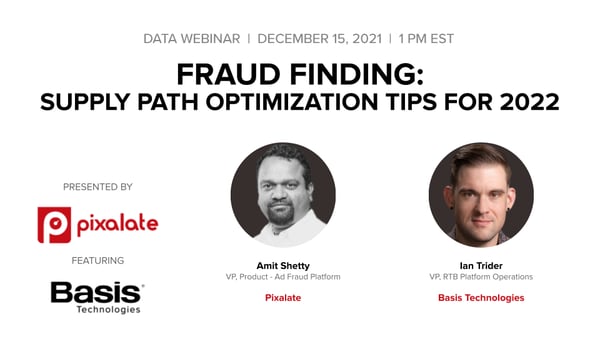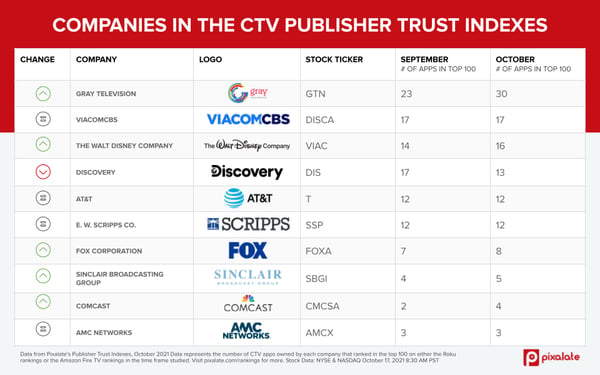
This week's review of ad fraud and quality in the digital advertising space.

Join Pixalate and Basis (formerly Centro) for a webinar on Wednesday, December 15, 2021, at 1 pm ET (UTC-5), for a breakdown of how to use programmatic Supply Path Optimization (SPO) to wrangle ad fraud in 2022.
Pixalate recently introduced the ad industry’s first ad fraud Supply Path Optimization (SPO) technology, which enables buyers and sellers to pick higher quality paths of delivering programmatic ads across CTV, mobile apps, and websites. Pixalate analysis reveals that overall IVT increases by 75% when going through 4 hops (compared to 1 or 2) and 71% through an incomplete path (a path in which every link in the chain does not use the SupplyChain Object).

"The Competition and Markets Authority (CMA) said that it had come to the decision after its investigation found an acquisition could harm competition between social media platforms, and that its concerns “can only be addressed by Facebook selling Giphy in its entirety to an approved buyer," informs The Verge.

The rebound of ad spend worldwide was enormous in 2021. "Traditional ad, digital ad, and total ad spending will all post their highest rates of increase" since eMarketer started to measure these rates in 2011.

The CMA "published a 125-page document outlining the next phase of its ongoing antitrust investigation into Google’s Privacy Sandbox," informs AdExchange. "The document contains an updated set of commitments from Google designed to prevent the company from developing its Privacy Sandbox proposals in ways that impede competition."

This week, Pixalate released three blogs revealing insights about CTV and mobile apps, as well as publicly traded companies owning the most quality CTV apps for advertisers in October 2021 in North America:
*By entering your email address and clicking Subscribe, you are agreeing to our Terms of Use and Privacy Policy.
These Stories on Weekly Recaps
*By entering your email address and clicking Subscribe, you are agreeing to our Terms of Use and Privacy Policy.

Disclaimer: The content of this page reflects Pixalate’s opinions with respect to the factors that Pixalate believes can be useful to the digital media industry. Any proprietary data shared is grounded in Pixalate’s proprietary technology and analytics, which Pixalate is continuously evaluating and updating. Any references to outside sources should not be construed as endorsements. Pixalate’s opinions are just that - opinion, not facts or guarantees.
Per the MRC, “'Fraud' is not intended to represent fraud as defined in various laws, statutes and ordinances or as conventionally used in U.S. Court or other legal proceedings, but rather a custom definition strictly for advertising measurement purposes. Also per the MRC, “‘Invalid Traffic’ is defined generally as traffic that does not meet certain ad serving quality or completeness criteria, or otherwise does not represent legitimate ad traffic that should be included in measurement counts. Among the reasons why ad traffic may be deemed invalid is it is a result of non-human traffic (spiders, bots, etc.), or activity designed to produce fraudulent traffic.”

